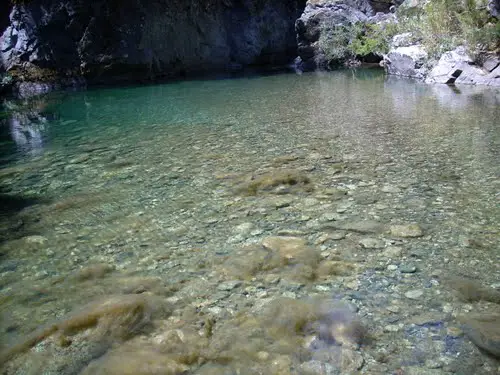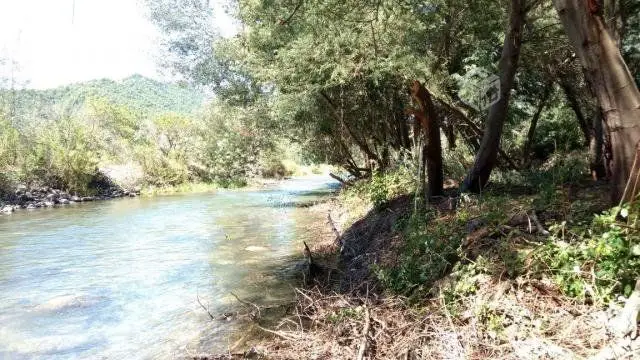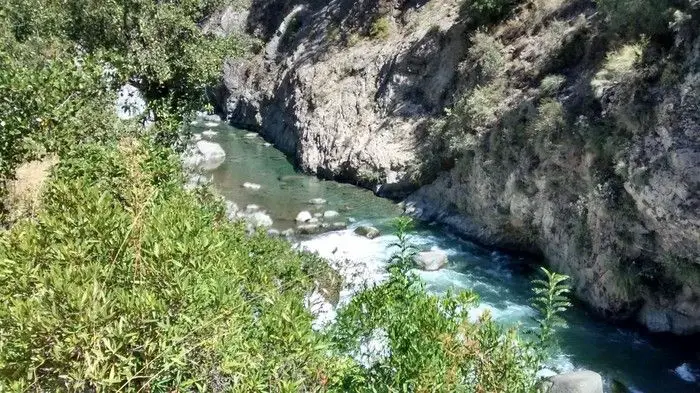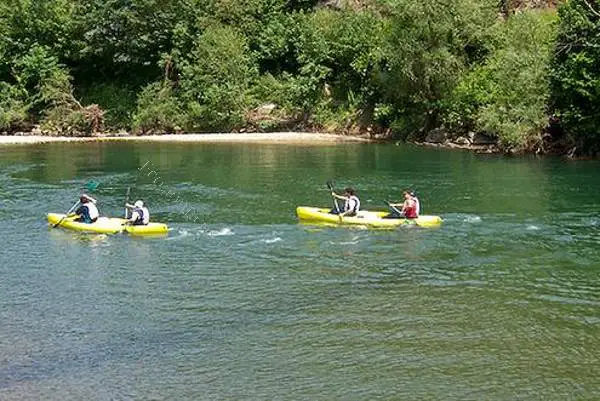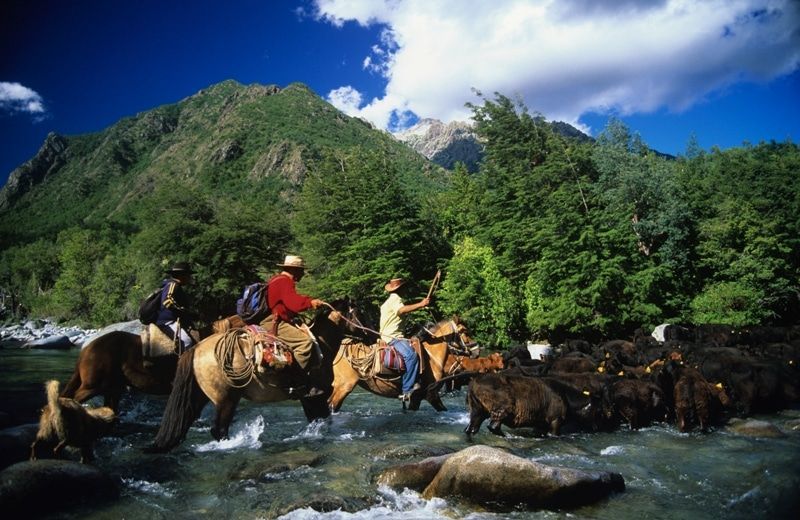The Ancoa River is a tributary of the Achibueno River in the province of Linares in the Maule Region of Chile. The navigable section of the Ancoa River is approximately eleven kilometres long and is an action-packed whitewater experience.
Indice De Contenido
Features of the Ancoa River
Located in the Maule region. Steep road to the place where the whole river comes out of a tunnel. Put-in, watch the tunnel water coming out of the river on the right. Get ready for the beauty of big class five boogie rapids (see article: Rio Los Esclavos).
A large stream about 6 feet wide about 1/3 of the way down. Scout and portage to the right. An odd fast run after the 2nd bridge, sneaky left. Great read and run from class 5 to a tributary and easy rapids to the 3rd bridge.
The run from bridge 2 to bridge 3 can be done in under 30 minutes and avoids the sketchy part of the shuttle path above. The upper section over the 2nd bridge is very scenic, great water class 4 sensations with class 5 overhangs (see article: Rio Matanza Riachuelo).
Ancoa basin
The Rio Ancoa receives its water through a tunnel from the Rio Melado, which seems to provide 800-1000 cfs (~36cms) of water throughout the summer, intended for irrigation of agricultural fields in the Rio Ancoa valley.
From the city of Linares, head towards the village of Llepo, but instead of heading towards Llepo, take the left fork that follows the Ancoa River. Follow the Ancoa River through Capamento Ancoa until you reach the entrance to Hornillos.
Here you will find the exit of the tunnel through the Andes to the Melado River. The whole trip to Hornillos is about 50 kilometres from Linares, but it will be one of the most difficult roads you will find in Chile (see article: Rio Jachal).
It is possible to camp almost anywhere along the Ancoa River, but you may want to return to town for a more comfortable, service-oriented campsite.
Kayaking on the Ancoa
The rocks and undercut rapids will probably require you to portage at least twice on this river. This is not a river to be taken lightly and lives up to its class IV/V reputation, especially in the upper sections. It is easy to lose a paddle or kayak when swimming. You can make it easier by getting in and out more selectively.
The typical kayaking season on the Ancoa River is November to February. The river is fed by a diversion tunnel from the Melado River and usually runs between 800-1000cfs (~36cms) throughout the summer. You can catch higher flows early in the season if you dare.
The most memorable part of any kayaking trip on the Ancoa River is often the condition of the road to the entrance station, described by some as “the worst road in Chile”.
Ancoa River Reserve
It has an area of 417 hectares and is located in the pre-Linares range. It is accessed by a dirt and gravel road from the city of Linares that reaches the tunnel of the Ancoa Canal, passing through the area of the reservoir and the Robleria Ancoa, with a distance of approximately 55 km (see article: Río Cautín).
The bird fauna is the most abundant, being the black woodpecker, the piti, the tricahue parrot, the eagle, the widow, the trust, the tasting and chercos tiuque. The administration is located at the entrance to the area. It has picnic and camping facilities.
Access to the reserve. You have to be very careful because the tourist guide shows two roads. We have to take the southern route. Although the Turistel and the Roads letter are two routes with the same characteristics, the road that goes through The Rabones, which is not pretty and apparently shorter, is in bad to very bad condition.
It is advisable to take the parallel road to the south, the L-429, towards Robleria. It is a well-maintained and busy road. Linares is 42 kilometres from here. From Robleria until a few kilometres past the dam, the road is a very good product of the construction of the Ancoa dam. The last three miles to the reservoir, beyond the limits of the work on the dam, are in good condition.

